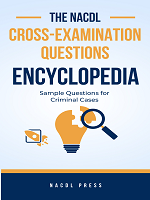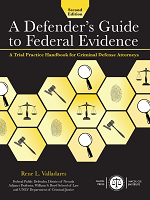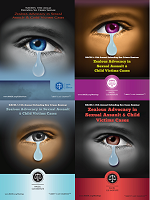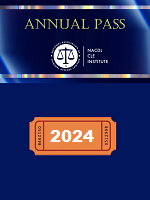Washington, DC (March 19, 2001) -- Ecstasy does not carry the addictive potential or cause the neurological harm of heroin or cocaine, and therefore the U.S. Sentencing Commission should not change in the penalty structure for ecstasy offenses to make each dose of ecstasy carry ten times the sentencing value of a dose of heroin, according to National Association of Criminal Defense Lawyers representatives testifying before the commission today.
NACDL President Edward Mallett offered written and oral testimony opposing increases in ecstasy penalties. In addition, two medical professors testifying at the request of NACDL offered evidence that ecstasy is not addictive and that its potential for neurological damage, both short- and long-term, is far less than that of heroin, methamphetamine, cocaine, or even alcohol.
Citing the cost not only to low-level defendants but to their families, Mallett said that young people who consume ecstasy at "raves" are the most likely recipients of increased penalties. "These users underestimate the consequences of their minor involvement with distributors. We end up with young, non-violent people serving long sentences. It's a waste of young lives and taxpayers'' money."
Mallett also pointed out that the tide is turning against excessive punishments in drug cases. "I asked several prosecutors, lawyers, and judges what they think of raising the ecstasy punishments to correspond with cocaine or heroin punishments. The overwhelming response is that there are so many problems with excessive punishments that the premise is wrong. That is, these heroin and cocaine punishments clearly do more harm than good and should hardly be the standard of correct thinking."
Professor David E. Nichols, who teaches medicinal chemistry and molecular pharmacology at Purdue University, told the commission that ecstasy is not addictive in any clinical sense. He said that studies show that the pleasurable effects of ecstasy cannot be sustained continuously for more than two or three days, and so there is no craving or compulsion to continue taking it, as with addictive drugs.
"Laboratory animals cannot be taught to self-administer ecstasy," Nichols said, although they will continually give themselves doses of addictive drugs, such as heroin or cocaine, when given the chance.
Professor Charles S. Grob, M.D., Director of the Division of Child and Adolescent Psychiatry at Harbor-UCLA Medical Center and a professor of psychiatry at UCLA School of Medicine, said that government-funded studies on ecstasy are "flawed and manipulated, and dominated by misinformation and exaggeration." He told the Commission that there is no credible evidence of of short- or long-term neuropsychological damage in ecstasy users.
Both Nichols and Grob testified at the request of NACDL.
"By classifying ecstasy at a higher level than heroin and cocaine, or even at the same level, you'll be sending the message that selling or using those drugs is a better choice," Mallett told the Commission. "Please do not send that message."
NACDL also provided other scientific material to the Sentencing Commission which questioned assertions of the harm brought about by use of ecstasy. The Federation of American Scientists, for instance, states that risk and damage factors indicate that the ecstasy sentencing equivalency should be one-tenth that of heroin, rather than ten times as much.
Mallett is a criminal defense lawyer in Houston. He can be reached at (713) 444-8146 (cell).
Professor Nichols can be reached at (765) 494-1461. Professor Grob can be reached at (310) 222-3112. Full text of Mallett's written testimony can be found at www.nacdl.org. The testimony and related materials are available by calling (202) 872-8600, ext. 228.
Contacts
NACDL Communications Department
The National Association of Criminal Defense Lawyers is the preeminent organization advancing the mission of the criminal defense bar to ensure justice and due process for persons accused of crime or wrongdoing. A professional bar association founded in 1958, NACDL's many thousands of direct members in 28 countries – and 90 state, provincial and local affiliate organizations totaling up to 40,000 attorneys – include private criminal defense lawyers, public defenders, military defense counsel, law professors and judges committed to preserving fairness and promoting a rational and humane criminal legal system.






